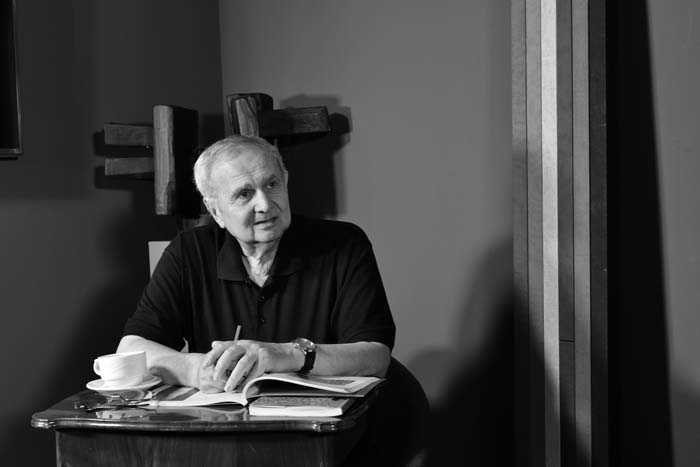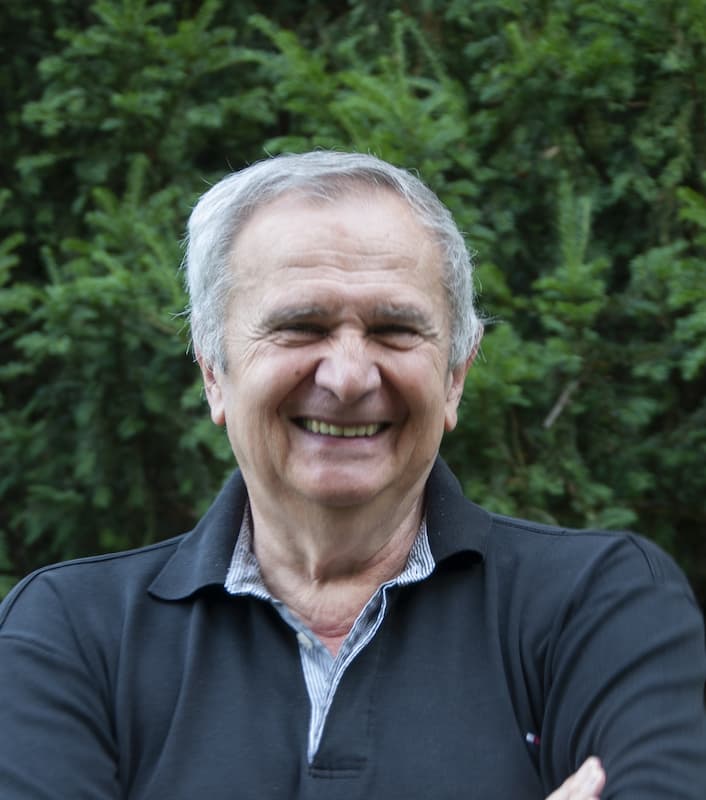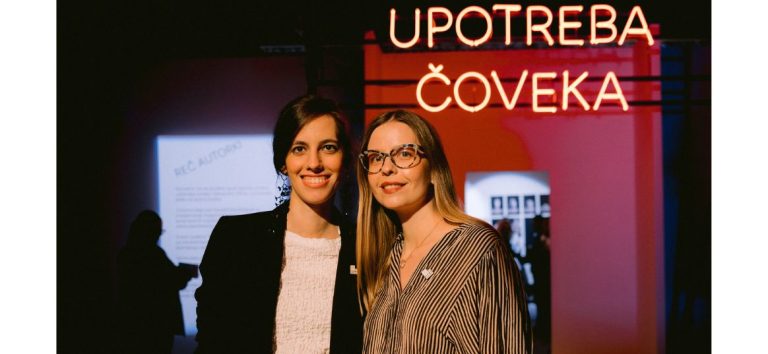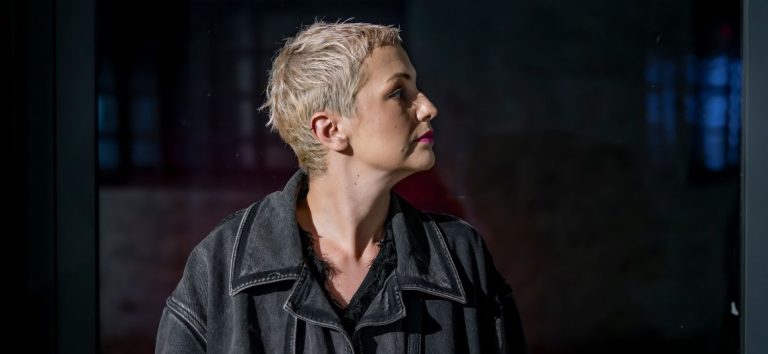‘During the last two decades and even today, art is in a kind of permanent transition because it adapts to new technological changes that have established a new state of the world, and the artist fights for a ‘new normalisation’ in a risky society in the most diverse ways. Today, there are no dominant tendencies, because there has been a kind of ‘scattering of meaning’, to indirect and relational artistic endeavours’, says art historian, art critic, and artistic director of the Danube Dialogues festival Sava Stepanov, who has collaborated with artists over several decades, trying to affirm their accomplishments.
As he says, during his entire five-decade career as a critic and art expert, ‘society, and especially politics, constantly had an ambivalent, love-and-hate relationship towards art,’ and he was always in the same situation as the artists, in the same environment, so thus shared the same ‘trouble’
In addition to Sava Stepanov’s great contribution to Novi Sad’s art circles, the reason for this conversation are the fascinating exhibitions that will be opened as part of this year’s festival with a decade-long tradition, and as part of The Danube Sea programme of the European Capital of Culture, Irig, Sremski Karlovci, Sremska Kamenica, Rakovac, Čerević, and Banoštor are the places that will be the main centres of culture and art, precisely because of the exhibition Outside the Centre – Danube Dialogues and Intertwinings, which will be opened on 13 August.
With the idea of decentralising cultural contents and moving them away from the centre, which is certainly a contemporary European practice in culture, this project is a real example of exactly that – it represents a strong artistic endeavour that encourages the idea of cooperation and togetherness.
Since 1973, Sava Stepanov has published many texts in fine art and photography in daily newspapers, professional magazines, and exhibition catalogues in the country and abroad. In the period between 1977 and 1981, he was a part-time editor of the Youth Forum Art Salon. He worked at the Gallery of Matica Srpska, Photo Gallery, and he was the director of the ‘Zlatno oko’ Centre for Visual Culture until 2011. Since 2011, he has been the editor of the art programme of the Institute of Culture of Vojvodina, while he has been the artistic director of the ‘Danube Dialogues’ festival since its inception.
The exhibition ‘Outside the Centre – Danube Dialogues and Intertwinings’ will be open on several dates until 20 August. What kind of stories will intertwine in places whose common feature is the Danube? Show us a bigger picture of the project.
Sava Stepanov: This cycle of four exhibitions that will be held over the next two weekends in the abovementioned locations will bring displays that will effectively show different patterns of current art, ‘illustrated’ by the works of representative artists working in Vienna, Bratislava, Budapest, and Berlin. The selection of authors and works for each of these exhibitions was made by our artists who have been living in those cities for a long time – Dejan Kaluđerović, Olivera Triaška, Szombathy Bálint, and Milovan Destil Marković. Their chosen artists live and work in those Central European cities and art centres that have been at the epicentre of a major crisis for the past two or three years. Thus, these exhibitions will allow us to go into the areas of Central European artistic contemporaneity, which today has a universal character because the whole world is covered by existential problems (from social – arising from ‘raging’ capitalism – to environmental, energy, media, alienation, pandemic…). Art is there to make us aware of the reality in which we are ‘caught’ and prepare us for increasingly strong hints of new and rapid changes that the near future will bring. I deeply believe that art can have such an effect on today’s man, especially when it is guided by systemic aesthetic thought and its ethical principles.

This is a great example of decentralisation of culture because it brings local communities a strong confirmation of their belonging to the world. The name Outside the Centre indicates the phenomenon of the functioning of current art outside the big cities: in the current ‘iconosphere’, contemporary art is no longer directed only towards the concept of ‘centre’ but also towards the margin, that is – smaller cities, outskirts, rural areas. What does it bring us?
Sava Stepanov: These four exhibitions are held in areas where no galleries are dealing with the most current events in art. Today, the concept of the periphery is losing its earlier pejorative meaning, primarily due to global informational and visual networking. I am convinced that these exhibitions in Sremska Kamenica, Čerević, Irig, and Sremski Karlovci will not catch anyone unprepared. I am convinced that the locals will like these installations because they will authoritatively offer them the exclusivity of an original work of art and the immediate presence of the artist. It certainly strengthens the impression and experience of the observer and draws him more suggestively into the field of action of art and its meaning.
The project ‘Outside the Centre’ points to the wealth of diversity as a common asset of Europe, the Danube region and Vojvodina, and a universal value that must be nurtured in the current times. This is precisely the purpose of the contemporary art festival Danube Dialogues, which has been working for 9 years to bring together curators, galleries, and artists from the entire Danube region. How have you been managing that for almost a decade?
Sava Stepanov: The Festival of Contemporary Art, which is celebrating its first anniversary this year. It was created in 2003 based on previous experiences that Vesna Latinović, the director of the Bel Art Gallery, and I had with earlier organising international events such as Balkan Art, the Biennial of Sketches and Projects, the Festival of Art Flags, the Biennial of the Contemporary Yugoslav Landscape, and numerous exhibitions of foreign artists… It turned out that the Danube region, thanks to the geography of the Danube, is ideal for a specific observation of events in contemporary European art because it deals with different societies and systems, different levels of development of Central European, former Eastern European, and Balkan countries… After all the Hungarian writer and philosopher György Konrad said: ‘Perhaps we are really all together like this, from the Black Forest to the Black Sea, a rather colourful and multi-coloured society of Europe – and that truly is a separate novel.’ Well, in such circumstances, it is challenging to make exhibitions. Both Vesna and I have considerable enthusiasm, zeal, and a kind of insatiable desire to facilitate the flow of art and its meanings through our actions. We have created a whole network of collaborating galleries, art historians, critics, and artists in all those countries of the Danube region and beyond. People in culture are equally enthusiastic everywhere, they love and want to cooperate, and in such circumstances nothing is difficult. What’s more, over 120 exhibitions were organised within these ten festivals, which is almost 10 years of programmes for some galleries!
Can you single out a few specific/special collaborations/exhibitions/projects/people that left an impression on you during the years of the festival? Give us a critical review.
Sava Stepanov: It is really difficult for me to single out any of the exhibitors because there were many artists whose work ‘convinced’ me that I can be satisfied and happy that I am engaged in art. Because, with excitement, I realise that artists can make the essence of reality visible through their work. Very often it turns out that some of them, with their earlier works, already anticipated some critical moments of the world and art that we only become aware of later… Art enlightens; we need its aesthetic system and its ethical principle to ‘regulate’ relations in society, to confirm our identities in the now permanent crisis of the world. It can save us, both today and – maybe even more – in the future. The famous conceptual artist Yoko Ono said: ‘Carefully fix yourself, but at the same time, think about fixing the world!’ Did we manage to contribute to a better world with the Danube Dialogues, did we manage to ‘refresh’ Novi Sad and the people of Novi Sad? I don’t know that, but I would like to have at least moved something for the better.

You have been the artistic director of the festival since its inception and an art critic as well, how and at what speed do contemporary art trends change over the years?
Sava Stepanov: Art is about permanent change. I have been engaged in art criticism for a very long time and I remember that, during the second half of the last century, visible shifts occurred almost every decade or so – conceptual art was dominant during the seventies; in the early 1980s, postmodernist changes arrived, which brought the return of image and sensibility (new image); in the 1990s, in the epochal crisis of the crumbling Yugoslav society, new modernist non-expressive tendencies (rationalism, geometry, construction, neo-conceptual reflections) appeared –the principles of which artists used to confront the atmosphere of general destruction that prevailed in the last (warring) decade of that unfortunate 20th century. After 2000, the world changes drastically. Globalism reinforces the power of rampant capitalism supported by progressive technology; everything is directed towards the glorification of the philosophy of profit. Big capital considers the whole world, nature and people as its resource and strives to fulfil such expectations with advanced technology to the greatest extent possible… During the last two decades and today, art is in a kind of permanent transition because it adapts to new technological changes that have established a new state of the world, and the artist fights for a ‘new normalisation’ in a risky society in various ways. Today there are no dominant tendencies because a sort of ‘scattering of meaning’ has occurred to indirect and relational artistic endeavours… Today’s artist tries by all means to constitute a work with the intention of a complete meaning – amid the chaotic everyday life. Because, as noted by the distinguished Edgar Morin, without this assumption ‘humanity in crisis fails to be human’. That is why art is important today, and why we must support it and believe in it.
As a critic, you have supported, helped, and encouraged artists for several decades, organising exhibitions and giving reviews of their work. You formed a significant collection of works of art, which you donated to the Gallery of Matica Srpska, where you were first employed. It’s a great thing to encourage and support artists/art.
Sava Stepanov: In such circumstances, I formed the collection. It was my ‘work environment’ that I enjoyed and was inspired by. I gave it to the Gallery of Matica Srpska. I chose this institution for deeply personal reasons because it was there that I was directed toward the world of art, and it was there that I gained an early enthusiasm for the work I do, an enthusiasm that still lasts even in my seventies. However, I always tried to be realistic and rational in my enthusiasm. That is why I am sincerely convinced that the works of Vojvodina artists from the seventies to the 2000s are now in a good and representative place.
Besides fine art, what other art do you enjoy?
Sava Stepanov: I like to read. Fortunately, or unfortunately, I read the classics as a schoolboy, as an ‘assignment’ from my father, for which I am grateful to him now. By the way, I am obsessed with Serbian novels, first the ‘realistic’ ones (the term by Jerkov’s critics) written by Tišma, Živojin Pavlović, Selenić, Ugrinov, and then the postmodernist ones (Kiš, Pekić, Pavić…). Among today’s writers, I read Albahari and Pištalo, and I like Vladan Matijević. Unfortunately, I am a persistent reader of professional literature, and I can hardly allow myself to deal with some topics that are outside my basic commitment…
In times of tense politics and globalist division, do you think that art can save the world, build new bridges, and spread the arms of reconciliation?
Sava Stepanov: Art cannot and will not change the world. But today, amid a real-world crisis, still offers a new form of sociality and a fragile utopian conviction that changes are possible and feasible. And isn’t that, in our circumstances, a true potential?!
Author: Gala Gajin
Photo: Marija Crveni Zečević








